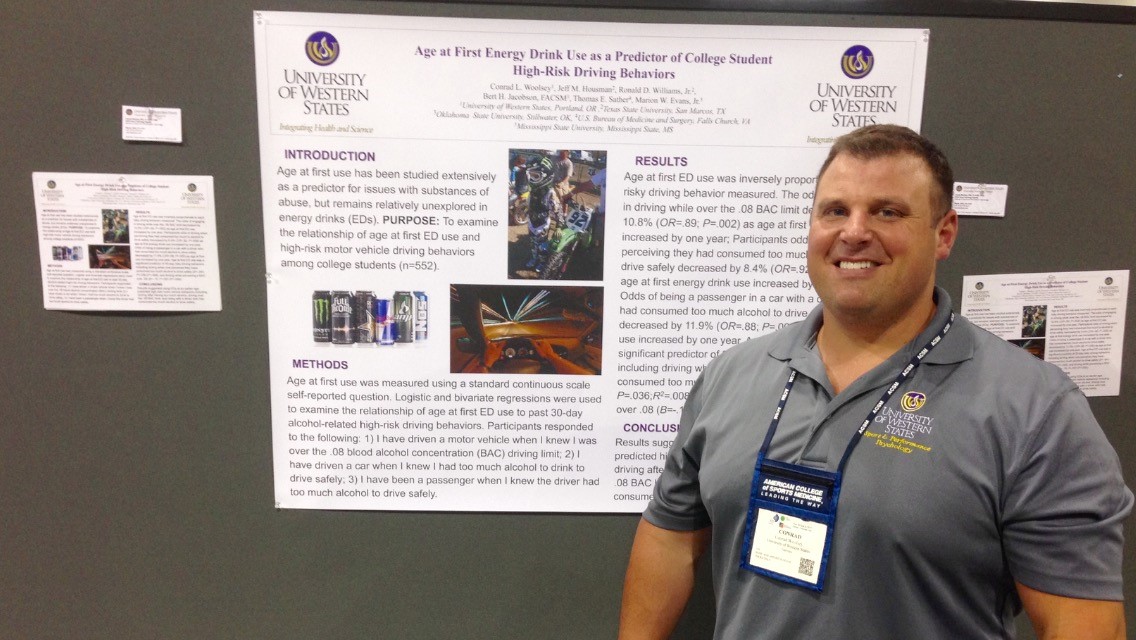
Conrad Woolsey, PhD, director of sport and performance psychology at University of Western States (UWS), recently presented his study, “Age at First Energy Drink Use as a Predictor of College Student High-Risk Driving Behaviors,” at the American College of Sports Medicine’s (ACSM) 64th Annual Meeting in Denver, Colo.
Dr. Woolsey was also recently published in the Journal of Child and Adolescent Substance Abuse. The article entitled “Age at First Use of Energy Drinks Associated with Risky Alcohol Related Motor Vehicle Behaviors Among College Students,” was from the same dataset as the presentation, but separate analyses were undertaken.
Dr. Woolsey was the lead investigator on the study used for the presentation and the paper, but he partnered with co-authors Jeff Housman and Ronald Williams (Texas State), Bert Jacobson (Oklahoma State), and Thomas Sather (U.S. Bureau of Medicine and Surgery) to gather the findings.
In the team’s study, the researchers examined energy drink age at first use and high-risk motor vehicle behaviors among a sample of 468 college students. The team found that the younger participants consumed energy drinks, the more at-risk they were for high-risk motor vehicle behaviors such as driving while intoxicated and knowingly choosing to ride with someone who they knew had too much alcohol to drive safely. Thirty-two percent of participants reported driving when they knew they were too drunk to drive safely with the odds of driving while drunk decreasing by 15.2 percent per year that age at first energy drink use increased.
Approximately 40 percent of participants reported being a passenger when knowing the driver had too much alcohol to drive safely. Age at first energy drink use was also a significant predictor of the odds of riding with someone who had consumed too much alcohol to drive safely, with the odds of knowingly riding with someone who was drunk decreasing by 14.9 percent as at first energy drink use increased by one year.
To read the full article and the researcher’s findings visit Taylor & Francis Online.
